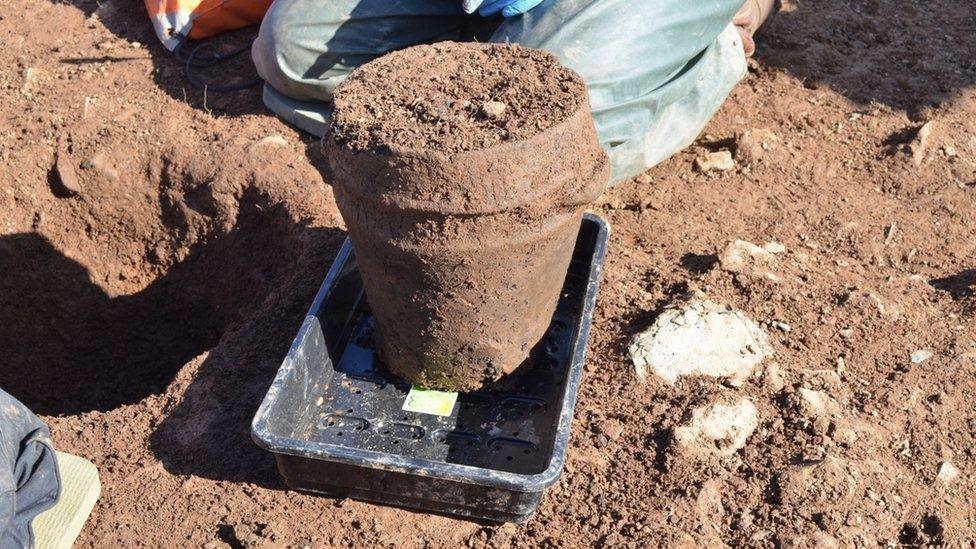Shropshire Bronze Age pendant bought by British Museum
- Published
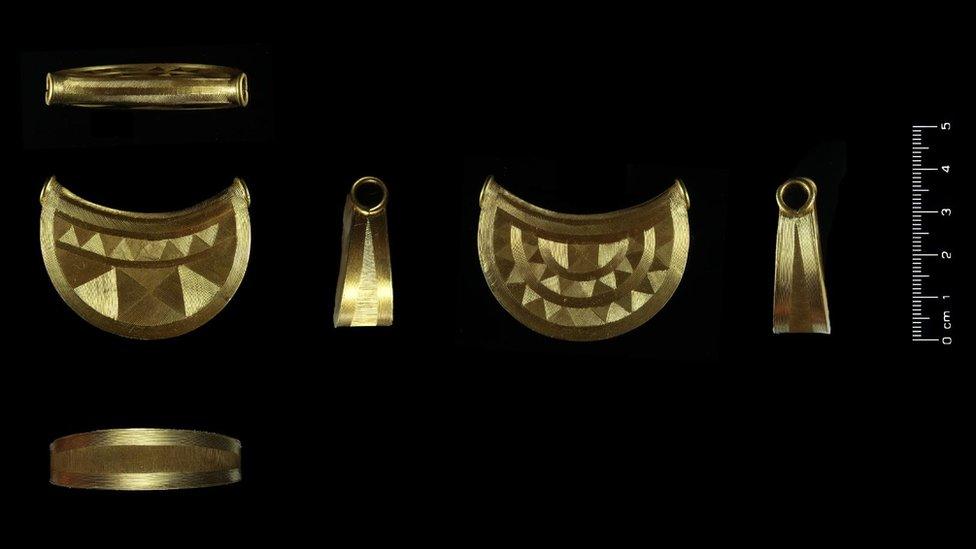
The contents of the hollow pendant are still being examined by experts
A 3,000-year-old Bronze Age gold pendant will go on public display after it was bought by the British Museum.
The pendant has been described as one of the most significant pieces of Bronze Age gold metalwork ever discovered in Britain.
It was found by a local metal detectorist in Shropshire in May 2018 and was later declared treasure.
The British Museum, which bought the item for £250,000, will lend it to the Shrewsbury Museum and Art Gallery.
The well-preserved piece of jewellery is decorated on all its surfaces with semi-circles and geometric motifs.
"This is one of the most significant discoveries from this period - the Bronze Age or first age of metal - to be made in Britain for more than a century," said Neil Wilkin, Bronze Age curator at the British Museum.
"It tells us how important the sun and its path through the sky during the course of the day and the year was to people's beliefs during this period.
"Its preservation is such that is difficult to believe that 3,000 years have passed between leaving its maker's hand and being placed inside a museum case."
The contents of the hollow pendant are still unknown and are the subject of ongoing analysis by experts at the British Museum.
The museum acquired the item with support from the Art Fund and the American Friends of the British Museum and will lend the pendant to Shrewsbury Museum for its first public display in November.

Follow BBC West Midlands on Facebook, external, on Twitter, external, and sign up for local news updates direct to your phone, external.
- Published11 December 2018
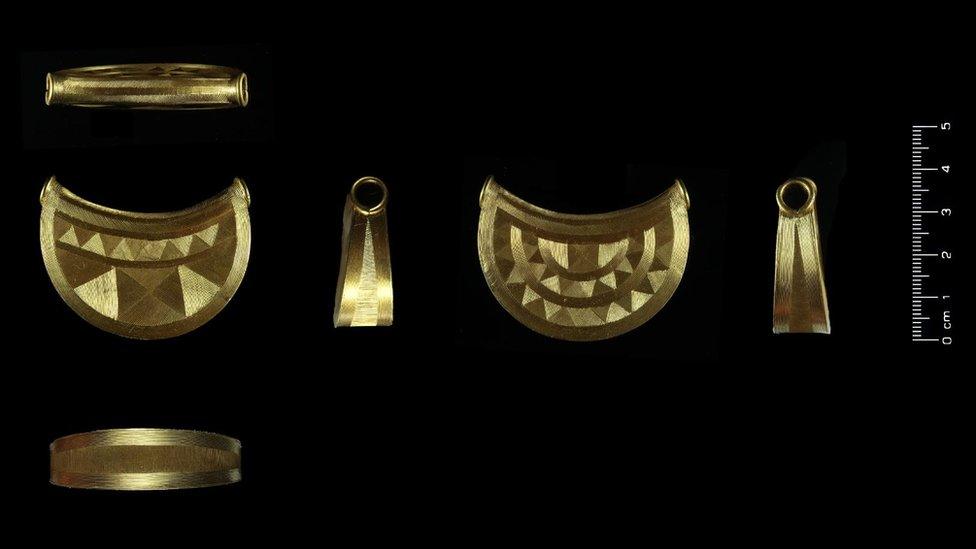
- Published23 November 2018
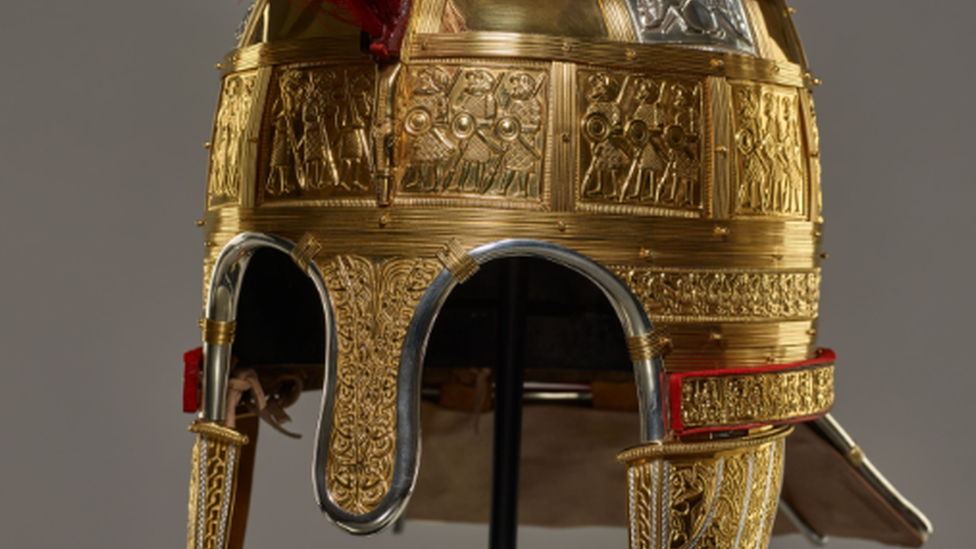
- Published14 August 2018
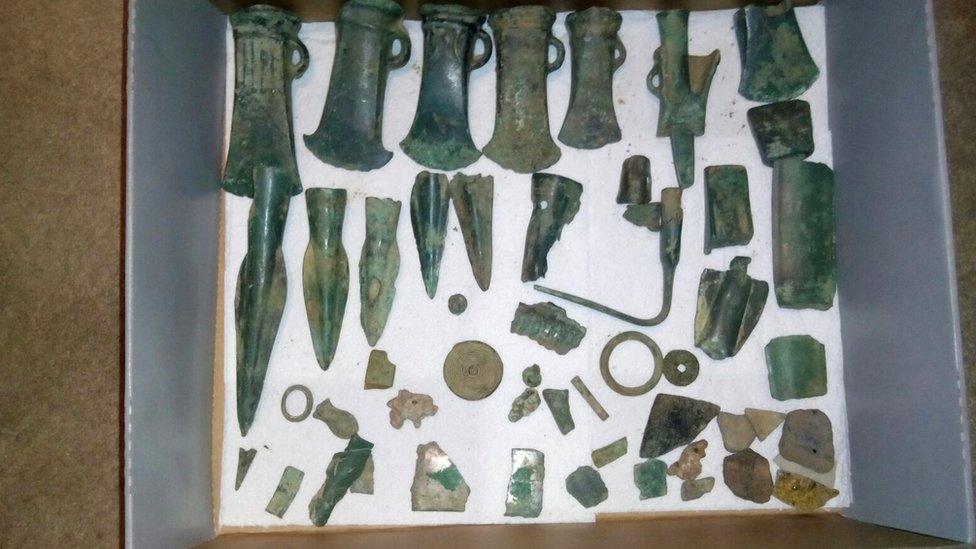
- Published6 October 2018
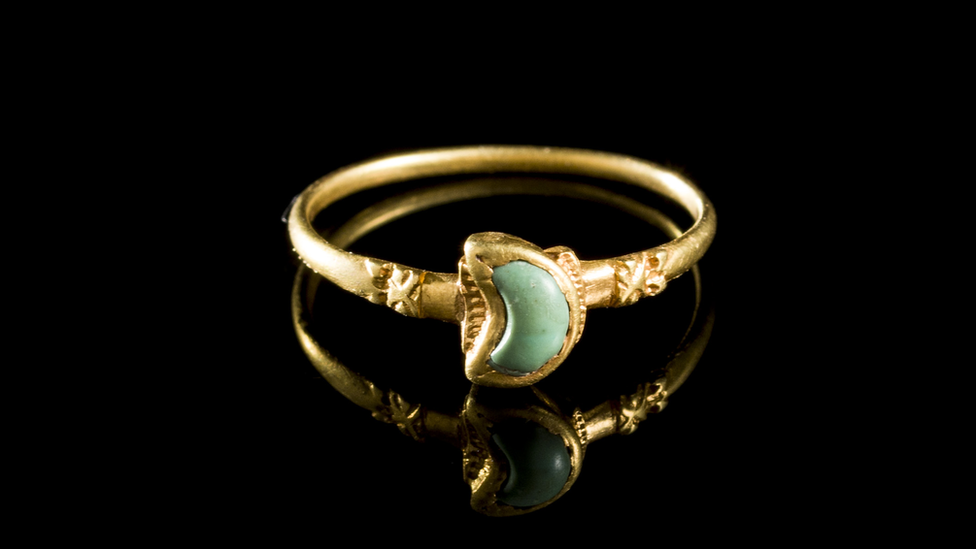
- Published17 April 2018
